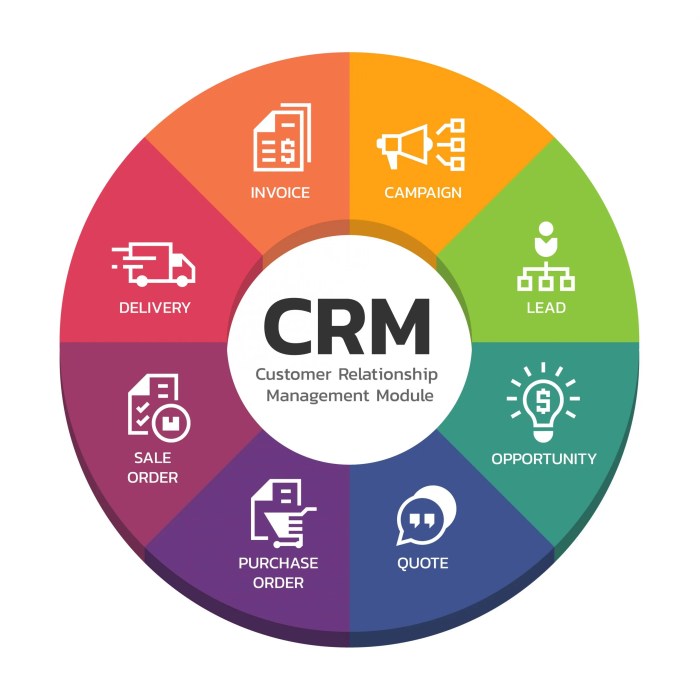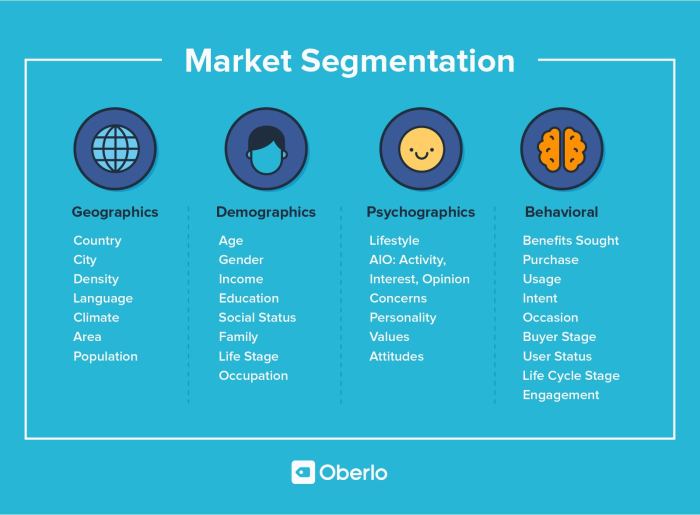CRM for Business Growth and Development A Guide to Success
CRM for Business Growth and Development is more than just a buzzword; it’s a strategic approach to building enduring customer relationships that drive tangible results. In today’s competitive landscape, businesses can’t afford to rely on traditional marketing tactics alone. They need a comprehensive system to understand their customers, anticipate their needs, and nurture them through every stage of the buyer journey.
This guide delves into the core principles of CRM, exploring how it empowers organizations to unlock new growth opportunities. We’ll examine how CRM tools facilitate personalized interactions, analyze customer data for strategic decision-making, and optimize sales processes for increased revenue generation. By harnessing the power of CRM, businesses can cultivate lasting customer loyalty, enhance brand advocacy, and achieve sustainable growth.
Understanding CRM’s Role in Business Growth: CRM For Business Growth And Development
CRM, or Customer Relationship Management, is a powerful tool that helps businesses cultivate and manage relationships with their customers, leading to increased profitability and sustainable growth.
The Fundamentals of CRM and Business Growth, CRM for Business Growth and Development
CRM systems are designed to centralize and organize customer information, allowing businesses to gain a comprehensive understanding of their customer base. By collecting and analyzing data about customer interactions, preferences, and behaviors, businesses can develop targeted marketing campaigns, personalize customer experiences, and optimize their sales processes. This data-driven approach enables businesses to:
- Improve customer retention: By understanding customer needs and preferences, businesses can provide tailored solutions and exceptional customer service, fostering loyalty and reducing churn rates.
- Boost customer acquisition: CRM systems can help identify potential customers through lead generation and nurturing strategies, effectively targeting individuals who are more likely to convert into paying customers.
- Increase sales and revenue: By optimizing sales processes, providing personalized recommendations, and streamlining communication, CRM systems can help businesses close deals faster and generate higher revenue.
Examples of CRM in Action
- Personalized marketing campaigns: A fashion retailer uses CRM data to segment its customer base by age, style preferences, and purchase history. This allows them to send targeted email campaigns promoting products relevant to each customer’s interests, increasing the likelihood of engagement and conversion.
- Proactive customer support: An online service provider uses CRM to track customer interactions and identify patterns in support requests. This allows them to proactively reach out to customers experiencing common issues, offering timely solutions and improving customer satisfaction.
- Cross-selling and upselling opportunities: A financial institution uses CRM to analyze customer transactions and identify opportunities for cross-selling products and services. By recommending relevant financial products based on customer needs, they can increase revenue and build stronger customer relationships.
Measuring the Effectiveness of CRM
To assess the impact of CRM on business growth, it’s essential to track key metrics that reflect its effectiveness. Some important metrics include:
- Customer lifetime value (CLTV): This metric measures the total revenue a customer generates over their relationship with the business. A higher CLTV indicates successful customer retention and loyalty.
- Customer acquisition cost (CAC): This metric tracks the cost of acquiring a new customer. A lower CAC indicates efficient marketing and sales efforts.
- Customer satisfaction (CSAT) scores: These scores measure customer satisfaction with products, services, and interactions. High CSAT scores indicate positive customer experiences and a strong brand reputation.
- Return on investment (ROI): This metric measures the financial return on CRM investments. A positive ROI indicates that the CRM system is generating more revenue than its cost.
CRM for Enhanced Customer Relationships
CRM, or Customer Relationship Management, is not just about managing customer data. It’s about fostering meaningful relationships that drive business growth. By leveraging CRM tools, businesses can personalize interactions, provide exceptional customer service, and ultimately build loyalty and advocacy.
Personalized Customer Interactions
CRM tools empower businesses to deliver personalized experiences that resonate with each customer. By collecting and analyzing customer data, CRM systems can identify individual preferences, purchase history, and communication styles. This data enables businesses to tailor their interactions to meet specific needs and preferences.For example, a clothing retailer might use CRM to segment customers based on their style preferences and send targeted promotions for new arrivals that align with their tastes.
Or, a financial institution could use CRM to personalize investment recommendations based on a customer’s risk tolerance and financial goals.
Improving Customer Service and Support
CRM platforms provide a centralized hub for managing customer interactions, making it easier for businesses to deliver prompt and efficient service. Here are some key features that enhance customer service and support:
- Ticketing systems: CRM systems often include ticketing systems that allow customers to submit inquiries, track their status, and receive timely responses.
- Live chat: Live chat features enable real-time communication with customers, addressing questions and concerns instantly.
- Knowledge bases: CRM platforms can integrate with knowledge bases, providing customers with self-service options to find answers to common questions.
- Customer feedback mechanisms: CRM tools can capture customer feedback through surveys, reviews, and social media monitoring, allowing businesses to identify areas for improvement.
Building Customer Loyalty and Advocacy
By consistently delivering personalized experiences and exceptional service, businesses can cultivate loyal customers who become advocates for their brand. CRM plays a crucial role in this process by:
“CRM fosters a sense of trust and connection with customers, encouraging them to become repeat buyers and recommend the brand to others.”
CRM tools can track customer lifetime value, identify high-value customers, and create personalized loyalty programs to reward their continued business. For example, a hotel chain might use CRM to identify frequent guests and offer them exclusive perks and discounts, fostering their loyalty.
Data-Driven Insights for Strategic Decision-Making
CRM systems are more than just contact management tools; they are powerful platforms for gathering and analyzing customer data. This data can be a goldmine for businesses seeking to understand market trends, customer preferences, and ultimately, make informed strategic decisions.
Leveraging CRM Data for Market Trend Identification and Customer Preference Understanding
By analyzing CRM data, businesses can gain valuable insights into the evolving market landscape and customer preferences. This data can be used to identify emerging trends, understand customer behavior, and anticipate future demand.For instance, analyzing customer purchase history, website browsing behavior, and social media engagement can reveal patterns and preferences. This data can help businesses understand what products or services are in high demand, which demographics are most receptive to specific offerings, and how customer preferences are shifting over time.
CRM Analytics for Informed Product Development and Marketing Strategies
CRM analytics can play a pivotal role in informing product development and marketing strategies. By analyzing customer feedback, purchase history, and engagement data, businesses can identify areas for product improvement, tailor marketing campaigns to specific customer segments, and optimize pricing strategies.For example, a company selling clothing might analyze customer feedback on product reviews and social media posts to identify areas for improvement in fit, style, or fabric.
They could also leverage CRM data to create targeted marketing campaigns based on customer demographics, purchase history, and browsing behavior.
Data Security and Privacy in CRM Implementation
The use of CRM data for strategic decision-making necessitates a strong focus on data security and privacy. Businesses must ensure that customer data is collected, stored, and used ethically and in compliance with relevant regulations. Implementing robust security measures, such as encryption, access control, and regular security audits, is crucial to protect sensitive customer information. Additionally, businesses should adhere to privacy principles, such as transparency, consent, and data minimization, to ensure that customer data is used responsibly.
Optimizing Sales Processes and Revenue Generation

CRM systems play a pivotal role in streamlining sales processes, transforming them from a series of disjointed activities into a cohesive and efficient engine for revenue generation. By centralizing customer data, automating tasks, and providing valuable insights, CRM empowers sales teams to work smarter, close deals faster, and ultimately, drive sustainable business growth.
Streamlining Sales Processes from Lead Generation to Closing Deals
CRM systems facilitate a seamless flow of sales activities, from the initial lead generation to the final deal closure. This comprehensive approach ensures that no opportunity slips through the cracks and that every interaction with a potential customer contributes to a successful outcome.
- Lead Generation and Qualification: CRM platforms enable businesses to capture leads from various sources, such as website forms, marketing campaigns, and referrals. The system then automatically qualifies leads based on predefined criteria, prioritizing those most likely to convert into paying customers.
- Lead Nurturing and Communication: CRM tools allow for automated communication with leads, sending personalized emails, SMS messages, and other relevant content at appropriate intervals. This consistent engagement keeps prospects engaged and informed, fostering a positive relationship that increases the likelihood of conversion.
- Sales Pipeline Management: CRM provides a visual representation of the sales pipeline, tracking the progress of each deal through different stages, from initial contact to closed-won. This allows sales managers to monitor performance, identify bottlenecks, and allocate resources effectively.
- Opportunity Tracking and Forecasting: CRM systems capture detailed information about each opportunity, including potential revenue, timeline, and key stakeholders. This data is used to generate accurate sales forecasts, allowing businesses to make informed decisions about resource allocation and future planning.
- Deal Closing and Customer Onboarding: CRM streamlines the closing process by providing a centralized platform for managing contracts, approvals, and payment processing. Once a deal is closed, the system facilitates a smooth onboarding process, ensuring that new customers receive the necessary support and resources to maximize their value.
Key CRM Features Contributing to Sales Efficiency
CRM systems are packed with features designed to enhance sales efficiency and effectiveness. These features empower sales teams to work smarter, close deals faster, and ultimately drive revenue growth.
| Feature | Description | Benefits |
|---|---|---|
| Lead Management | Capture, qualify, and nurture leads from various sources. | Improved lead conversion rates, increased sales productivity. |
| Contact Management | Store and manage customer information, including contact details, purchase history, and communication preferences. | Personalized communication, improved customer relationships. |
| Sales Pipeline Management | Visualize and track the progress of deals through different stages. | Enhanced sales forecasting, improved resource allocation. |
| Opportunity Management | Capture and manage details about each sales opportunity, including potential revenue, timeline, and key stakeholders. | Accurate sales forecasting, better deal management. |
| Sales Automation | Automate repetitive tasks, such as email marketing, appointment scheduling, and follow-up reminders. | Increased sales productivity, reduced administrative burden. |
| Reporting and Analytics | Generate insightful reports and dashboards to track sales performance, identify trends, and make data-driven decisions. | Improved decision-making, optimized sales strategies. |
Examples of CRM Tools Improving Sales Forecasting and Revenue Projections
CRM systems provide valuable insights that enable businesses to improve their sales forecasting and revenue projections. By analyzing historical data and current trends, CRM tools help businesses make more accurate predictions about future sales performance.
“A CRM system can help you predict your revenue by analyzing your sales pipeline and the likelihood of closing deals. It can also help you identify potential opportunities and risks, so you can adjust your strategies accordingly.”
For example, a CRM system can analyze past sales data to identify seasonal trends and patterns. This information can be used to create more accurate forecasts for future sales, allowing businesses to anticipate fluctuations in demand and adjust their resource allocation accordingly. CRM can also analyze customer demographics and purchase history to identify potential new markets and target specific customer segments.
This allows businesses to expand their reach and generate new revenue streams.
CRM for Marketing Automation and Engagement

Imagine sending personalized emails based on a customer’s browsing history or automatically posting targeted ads on social media platforms. This is the power of CRM in action, streamlining your marketing efforts and maximizing customer engagement.
CRM Facilitates Targeted Marketing Campaigns and Personalized Communications
CRM systems are the foundation for creating highly targeted and personalized marketing campaigns. They collect and analyze valuable customer data, enabling you to segment your audience based on demographics, purchase history, interests, and behavior. This allows you to tailor your marketing messages and offers to specific customer groups, increasing the likelihood of engagement and conversion.
CRM Features for Marketing Automation
CRM features significantly automate marketing tasks, saving time and resources while enhancing efficiency.
- Email Marketing Automation: CRM platforms offer robust email marketing features that automate email campaigns based on specific triggers. For example, you can send welcome emails to new customers, abandoned cart reminders, or personalized birthday greetings. This automation ensures timely and relevant communication, improving customer engagement and retention.
- Social Media Engagement Automation: CRM tools can integrate with social media platforms, automating tasks like scheduling posts, responding to comments, and monitoring brand mentions. This helps you stay active on social media, engage with your audience, and build stronger relationships.
- Customer Segmentation and Targeting: CRM systems allow you to segment your customer base based on various criteria, including demographics, purchase history, and website activity. This segmentation enables you to target specific groups with tailored marketing messages and offers, increasing campaign effectiveness.
Impact of CRM on Marketing ROI and Customer Engagement
CRM plays a crucial role in boosting marketing ROI and enhancing customer engagement. By automating marketing tasks, personalizing communications, and providing data-driven insights, CRM helps businesses:
- Increase Marketing ROI: By targeting the right audience with the right message at the right time, CRM helps businesses achieve a higher return on their marketing investments. Automated campaigns and personalized communications improve conversion rates and customer lifetime value, contributing to a more efficient and profitable marketing strategy.
- Enhance Customer Engagement: Personalized and relevant communications create a positive customer experience, leading to increased engagement and loyalty. Automated follow-ups and personalized recommendations foster stronger customer relationships, resulting in repeat purchases and positive word-of-mouth marketing.
Implementing and Integrating CRM Solutions

The implementation and integration of a CRM system are crucial steps in leveraging its full potential for business growth and development. This involves careful planning, execution, and ongoing support to ensure a seamless transition and maximize the benefits of the system.
Choosing the Right CRM System
Selecting the right CRM system is essential for successful implementation. This involves considering the specific needs and requirements of the business, as well as the available options in the market.
- Define Business Objectives: Clearly articulate the business goals that the CRM system will help achieve. This could include improving customer satisfaction, increasing sales, or streamlining marketing efforts.
- Identify Key Features: Determine the essential features and functionalities that the CRM system must possess to meet the defined business objectives. This might include contact management, sales automation, marketing automation, customer support, and reporting capabilities.
- Evaluate CRM Options: Research and compare different CRM systems available in the market, considering factors such as cost, features, ease of use, scalability, and integration capabilities. Consider cloud-based CRM systems for their flexibility and affordability, or on-premise solutions for greater control and customization.
- Conduct Proof of Concepts (POCs): Conduct pilot projects or trials with shortlisted CRM systems to evaluate their performance, usability, and compatibility with existing business processes. This will help in making an informed decision.
Implementing the CRM System
Once the CRM system is chosen, the implementation process requires careful planning and execution. This involves configuring the system, training users, and integrating it with existing business systems.
- Data Migration: Migrate existing customer data from legacy systems into the CRM system. This process requires careful planning and data cleansing to ensure accuracy and consistency.
- System Configuration: Configure the CRM system to match the specific needs and workflows of the business. This includes setting up custom fields, workflows, and automations to streamline processes.
- User Training: Provide comprehensive training to all users on how to effectively utilize the CRM system. This should include hands-on training, documentation, and ongoing support to ensure user adoption and maximize system usage.
- Go-Live and Ongoing Support: Plan a phased rollout of the CRM system to minimize disruption to business operations. Provide ongoing support to users, address any issues or challenges, and continuously monitor and improve system performance.
Integrating CRM with Existing Systems
Seamless integration of the CRM system with other business systems is crucial for maximizing its effectiveness. This ensures data consistency, eliminates redundancies, and streamlines business processes.
- Identify Integration Points: Determine the key areas where the CRM system needs to interact with other systems, such as accounting software, marketing automation platforms, and email marketing tools.
- Choose Integration Methods: Select appropriate integration methods based on the complexity of the integration and the capabilities of the systems involved. This could include application programming interfaces (APIs), data synchronization tools, or middleware solutions.
- Test and Monitor Integrations: Thoroughly test the integrated systems to ensure data accuracy, consistency, and proper functionality. Monitor the integrations regularly to identify and address any issues or performance bottlenecks.
Importance of Ongoing Training and Support
Continuous training and support are essential for ensuring the long-term success of the CRM system. This helps users stay up-to-date with new features, address challenges, and maximize the value of the system.
- Regular User Training: Provide ongoing training sessions to keep users informed about new features, best practices, and updates to the CRM system.
- User Support Channels: Establish clear support channels for users to seek assistance with any issues or questions they may have. This could include dedicated help desks, online forums, or knowledge bases.
- CRM System Updates: Regularly update the CRM system to benefit from new features, security patches, and performance enhancements. Ensure users are aware of the updates and their impact on system functionality.
Case Studies of CRM Success Stories
CRM success stories are a powerful testament to the transformative potential of this technology. By delving into real-world examples, we can gain valuable insights into how businesses have leveraged CRM to achieve significant growth and enhance customer relationships.
Examples of Successful CRM Implementations
CRM success stories showcase the transformative power of this technology. Here are some real-world examples of businesses that have achieved significant growth through effective CRM implementation:
- Salesforce: This leading CRM provider, known for its cloud-based solutions, has helped countless businesses achieve remarkable success. For instance, Adobe used Salesforce to streamline its sales processes, resulting in a 20% increase in sales productivity and a 15% reduction in sales cycle time. This improved efficiency allowed Adobe to focus on building stronger customer relationships and driving revenue growth.
- HubSpot: Another popular CRM platform, HubSpot has empowered businesses to achieve notable growth through its marketing automation and sales tools. Marketo, a leading marketing automation platform, adopted HubSpot CRM to centralize its customer data and automate its marketing campaigns. This resulted in a 30% increase in lead generation and a 25% improvement in conversion rates. The integration of marketing and sales processes through HubSpot CRM allowed Marketo to nurture leads effectively and drive conversions.
- Microsoft Dynamics 365: This comprehensive CRM platform, developed by Microsoft, offers a range of solutions tailored to specific industries. Starbucks, the global coffee giant, implemented Microsoft Dynamics 365 to enhance its customer loyalty program. This resulted in a 20% increase in customer retention and a 15% rise in average customer spend. By leveraging the platform’s capabilities, Starbucks personalized customer experiences, fostering deeper connections and driving customer loyalty.
Key Factors Contributing to CRM Success
The success of CRM implementations hinges on several crucial factors. These factors contribute to the effectiveness of CRM in driving business growth and customer satisfaction:
- Clear Business Objectives: Before embarking on a CRM implementation, businesses must define clear objectives. These objectives should align with the overall business strategy and encompass specific goals such as increased sales, improved customer retention, or enhanced marketing effectiveness.
- Data Quality and Integration: The foundation of successful CRM lies in accurate and comprehensive customer data. Businesses must prioritize data quality, ensuring that information is up-to-date, consistent, and readily accessible across different departments. Integrating data from various sources into a unified CRM system is crucial for a holistic view of customer interactions.
- User Adoption and Training: Effective CRM implementation requires widespread user adoption. Businesses should provide adequate training to ensure that employees understand how to utilize the system effectively. This includes demonstrating the benefits of CRM and addressing any concerns or challenges.
- Continuous Improvement and Optimization: CRM is an ongoing process that requires continuous improvement and optimization. Businesses should regularly review their CRM strategy, identify areas for improvement, and adapt their approach based on evolving customer needs and market trends.
Comparative Analysis of CRM Strategies
Different CRM strategies can yield varying outcomes depending on the specific needs and goals of the business. The following table compares and contrasts the results of different CRM approaches:
| CRM Strategy | Key Features | Outcomes |
|---|---|---|
| Customer Relationship Management (CRM) | Centralized customer data, automated processes, personalized communication | Improved customer satisfaction, increased sales, enhanced customer retention |
| Salesforce Automation | Streamlined sales processes, automated lead management, sales forecasting | Increased sales productivity, shorter sales cycles, improved sales performance |
| Marketing Automation | Automated marketing campaigns, targeted messaging, lead nurturing | Increased lead generation, improved conversion rates, enhanced marketing ROI |
| Customer Service Automation | Automated customer support, self-service options, knowledge base management | Improved customer service efficiency, reduced response times, enhanced customer satisfaction |
Implementing and integrating CRM solutions effectively requires a strategic approach. From choosing the right system to ensuring seamless integration with existing business processes, every step plays a vital role in realizing the full potential of CRM. By embracing the principles Artikeld in this guide, businesses can unlock the power of customer relationships, drive growth, and achieve lasting success in an increasingly competitive marketplace.
Expert Answers
What are the key benefits of implementing a CRM system?
CRM systems offer numerous benefits, including improved customer retention, enhanced sales efficiency, personalized marketing campaigns, data-driven insights, and increased revenue generation.
How do I choose the right CRM system for my business?
Consider your business size, industry, specific needs, budget, and integration requirements. Research different CRM solutions, read reviews, and request demos to find the best fit.
What are the common challenges associated with CRM implementation?
Challenges include data migration, user adoption, integration with existing systems, and ongoing training and support.
